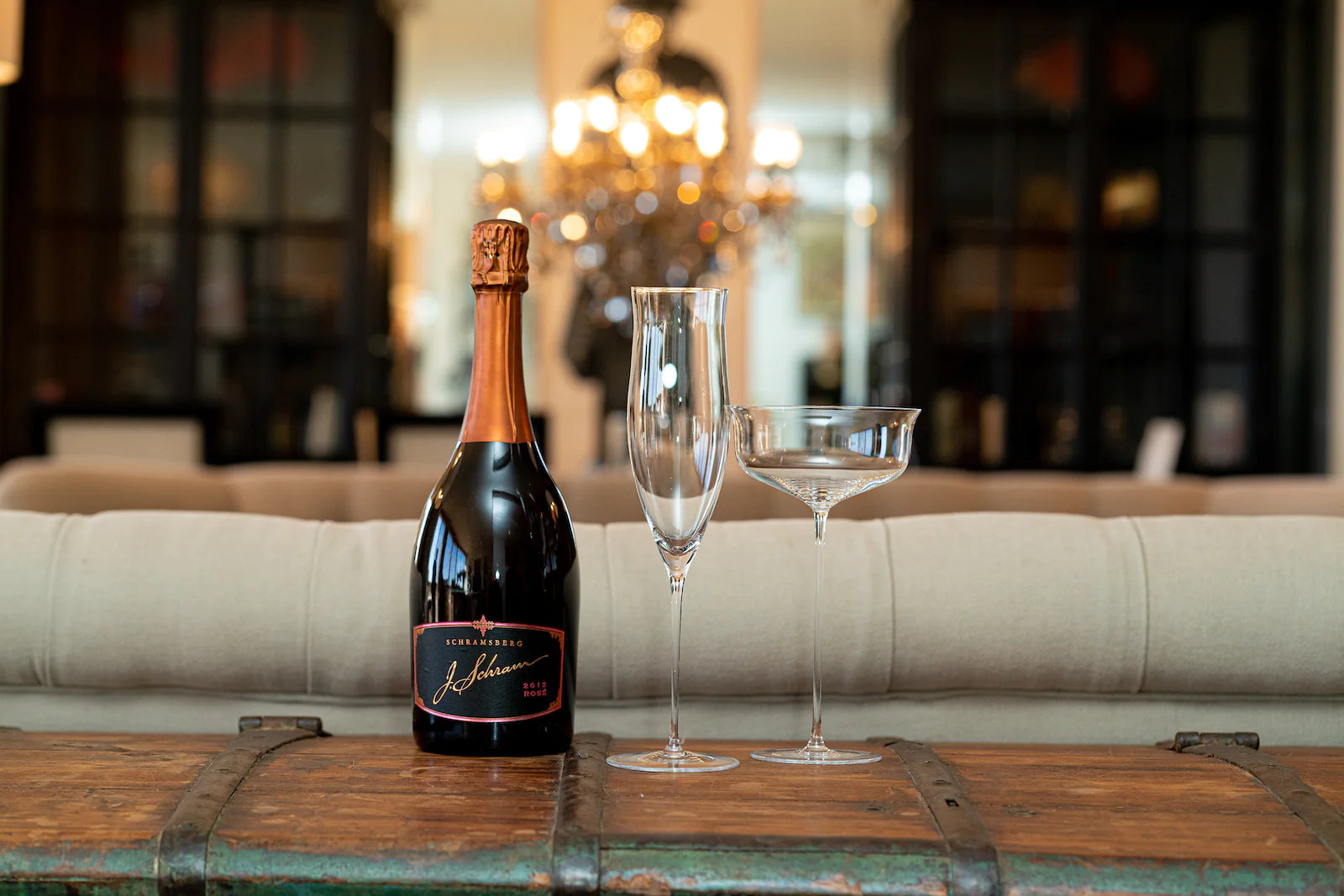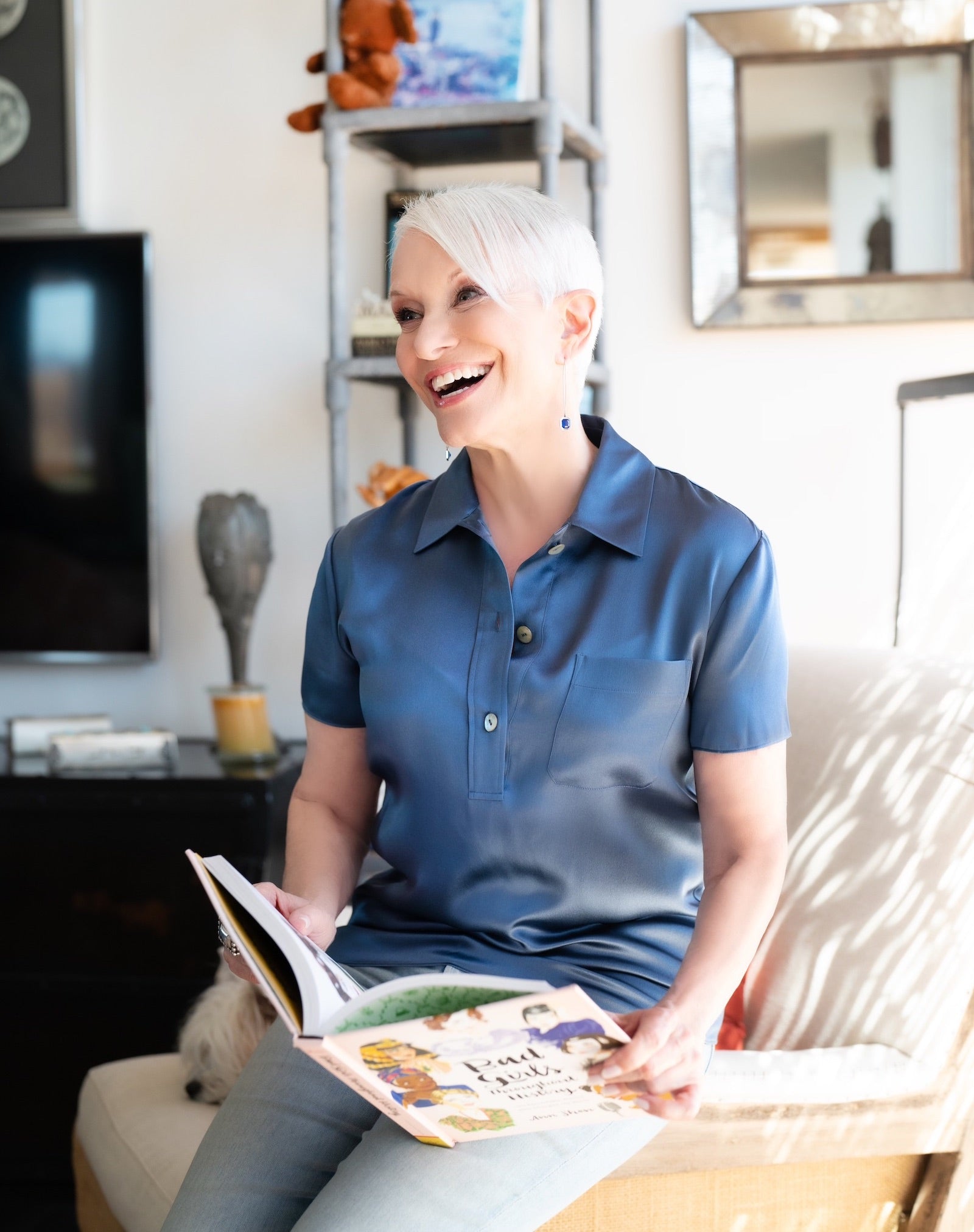Champagne, Home Entertaining
How to Serve Champagne: The Art of Serving Champagne
A guide to serving champagne. Expert Fran Berger offers her expertise and advice on how to serve champagne in style and, above all else, how to enjoy your bubbly.

Champagne is synonymous with celebrating - especially when you pair it with the right stemware! Using glasses that feel luxurious and intensify the flavor and quality of your sparkling wine can make the most ordinary moment extraordinary. Learn more about the art of serving champagne and how it can help you elevate any dinner, event, or night at home and make every day worth celebrating.
Serving Champagne
Bringing out a bottle of champagne at any event is enough to bring smiles from across the room, but it’s how you present and serve each glass that adds a dose of magic and treasured memories to your at-home experiences every time. Here’s how:

Serving Techniques
To Pop or Not to Pop
We see it all the time: in movies, at New Year’s celebrations, at large, extravagant parties. Someone pulls out the champagne, and POP! Suddenly, foam is spraying across the room, everyone is laughing, and the drinks are flowing.
Popping the cork on the champagne bottle has always been a beloved part of the celebratory experience, but is it really necessary when serving every time?
While popping the cork adds a dramatic effect to your hosting experience, it’s not the proper (nor the most appropriate) way to open a bottle of champagne. In fact, experts say removing the cork should only make a small sound, a “sigh,” really, if any at all.
A bottle of champagne, like all great wine, should be opened with ease and care. When a bottle of sparkling wine is ‘popped’, it disturbs the flavors and wastes the effervescent tipple (foam). You can still create an iconic experience for your guests without having to sacrifice your bubbly in just three steps:
-
Chill your bottle of champagne by your preferred method (read on for my recommended methods).
-
Remove the foil from around the top of the bottle. With your thumb holding down the top of the cork, twist the wire at the base of the cage (which secures the cork) counter-clockwise to completely loosen.
-
Place a towel on top of the bottle and hold the cork firmly with your non-dominant hand. Slowly twist the bottle towards your body while keeping a firm grip on the cork. Remember to twist the bottle, not the cork, as you could tear the cork. The cork should ease its way out, releasing only a small sigh and not a popping sound.
Wine Folley suggests the best angle to hold the bottle when uncorking is 30-45 degrees. “This will facilitate extraction and prevent the Champagne from overflowing.” It’s also important to remember to point the bottle away from others as to avoid harm to anyone should the cork go flying by mistake.

Serving Temperature
Champagne is best served chilled, ideally between 8-10 degrees C (47-50 degrees F). For no reason should a bottle of champagne ever be frozen. Keeping your bottle at the proper temperature can be done in several ways. The two preferred methods I suggest include the following:
-
Storing the bottle in your refrigerator by laying it on its side for 3-4 hours.
-
Placing the bottle in a salted ice-water bucket for 20 minutes for quick chilling.
How to Fill the Glass
Overflowing Champagne Glass or Not
To give your bubbly time to open, it is best to fill no more than two-thirds of the glass. This will allow all of the aromas and flavors to develop and present your guests with the highest quality experience of your champagne.
Pro Tip: If you are pouring, place your thumb inside the ‘dimple’ or punt at the base of the bottle to help maintain a strong grip.
Tilting The Glass
When pouring a glass of your favorite Blanc-de-Blanc, Brut, or Rosé, be sure to tip the glass at a 45-degree angle to reduce the amount of foam and keep from disturbing the flavors (just as you would with a beer).
The Best Glasses To Serve Champagne
The vessel you pour your champagne into can really accentuate the experience. A dazzling, high-quality crystal glass not only flatters your champagne of choice, but it also brings out the flavors and aromas that make the experience extraordinary. Below are the top 5 glasses I recommend for your champagne occasions:
Fran Berger Signature Champagne Flutes
From my 25 years of experience, I have learned that even the best bubbles need a unique and luxurious glass to bring their flavors and colors out. My signature glasses are a delicacy, made to feel like a bird in your hand and aesthetically elevate any tablescape or bar they are placed within.
This hand-blown, 100% lead-free crystal glasses, made in the Czech Republic, were designed to heighten every experience you indulge in weekend brunches, cocktails, dinners, intimate conversations for two, special events, and even quiet evenings with a book. Upgrade your collection with a beautiful champagne flute or coup for $260 per pair.
Other Champagne Glasses
I also have a few other honorable mentions that you may want to consider, like the Baccarat - Mille Nuit Flutissimo, Moser - Mozart Champagne Glass, William Yeoward Crystal - Lally Champagne Flute, and the Table Art - Ambassador Champagne Flute. All of these glasses are great choices that will give you a better-tasting experience. If you want to dive into the world of champagne glasses, read more about the best champagne glasses and where to purchase them here.
Champagne Food Pairings
Champagne can be served at any time - at the start of a gathering, as a perfect complement to your entrée, with your dessert, or at the end of a meal. Be sure to match the level of sweetness of your bubbly to the sweetness of the food in your pairing. Dry champagne served with a sweet dish will taste very acidic! See the menu suggestions below to find the right bubbly to pair with your next culinary adventure:
Brut (Chardonnay white from white grapes)
The most common and food-friendly style
Steak
White Truffle Potatoes
Salad with Citrus Dressing
Fried Chicken
Macaroni & Cheese
Oysters (grilled or raw)
Fettuccini with black olives and chives
Fried Fish and Chips
Dry/Extra Brut
Roasted Chicken Breast with Mushroom Gravy
Seasoned Vegetable Medley
Lobster
Garlic & Herbs Angel Hair Pasta
Due to its high acidity, Extra Dry Champagne pairs very well with soft and creamy cheeses. When put together, the flavors blend to create a unique melt-in-your-mouth tasting experience.
Cheese plate with washed rind cheese (Vacherin, Epoisses, Talegio, Munster)
Jams
Plain Crackers
Rosé
Charcuterie board of cured meats
Roasted Duck
Creamy Risotto
Arugula Salad
Smoked Salmon
Roasted Asparagus with Parmesan
Spinach Salad with Feta
Homemade Pizza
Champagne Appetizer Pairing
Champagne, caviar, and conversation are my go-to ingredients for creating a celebratory moment. If you want something to nibble on while you sip, here is a list of Hors D'oeuvres that pair well with a bottle of sparkling wine:
- Antipasto
- Caviar
- Bruschetta
- Grilled Octopus
- Duck Fat Fried Potatoes
- Fried Mushrooms (especially with a Blanc de Noirs or white wine from red grapes)
- Chips or really anything salty!
Champagne Cheese Pairing
Due to its high acidity, Extra Dry Champagne pairs very well with soft and creamy cheeses. When put together, the flavors blend to create a unique melt-in-your-mouth tasting experience.
Some cheeses that go best with a glass of champagne include brie, goat cheese, Délice de Bourgogne, Camembert, and one of my favorites, Brillat-Savarin. Match these with various crackers, and you’ll have a delicious trio to share with others!
Champagne And Dessert Pairing
There’s nothing more delectable than a crisp, refreshing glass of sparkling wine paired with the perfect dessert, but remember to match the sweetness of the wine to the sweetness of your dessert. Couple your champagne with a simple palette cleanser or a sweet and delicate treat to help shift to a more comfortable and relaxed part of the dining experience.
I’ve found that the best desserts to share with champagne include:
- Almond cookies and biscuits
- Warm gingerbread
- Zesty lemon bars
- Macarons
- Gourmet popcorn
- A light and silky chocolate cake
- Tarts and puddings such as rhubarb, apricot, and apple
Conclusion
Remember this: first impressions are lasting impressions, and that absolutely applies when we are talking about high-quality sparkling wine! I hope you can use these champagne-serving techniques to heighten the senses and overall experience of your future gatherings and make every moment worth celebrating. Cheers!


























